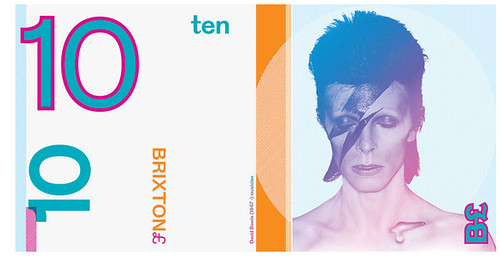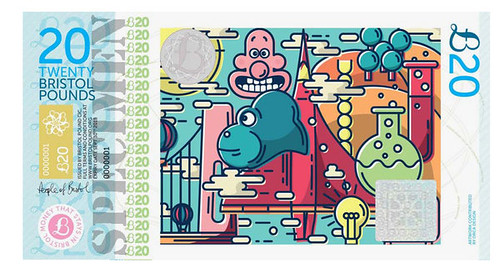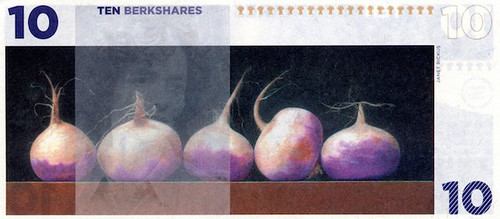
PREV ARTICLE
NEXT ARTICLE
FULL ISSUE
PREV FULL ISSUE
ALTERNATIVE CURRENCIES: ARTISANAL CASH
Last week we discussed the new design for a Brixton Pound note, an alternative currency in south London. Dick Johnson forwarded this
piece from the New York Times that includes that piece in an overview of alternate currencies around the world. Thanks. Here's
an excerpt. -Editor
Though paper money here typically bears the visage of Queen Elizabeth, the Brixton district of the city last month released a new 5-pound note designed by Jeremy Deller, an artist who won the prestigious Turner Prize in 2004. It features a fuzzy, psychedelic image of an androgynous face surrounded by rainbow clouds and coruscating, swirling etchings. “I wanted something old-fashioned looking,” Mr. Deller said. “Something almost pre-currency.” One hundred and twenty miles west of Brixton, in the city of Bristol, a pound note issued after a design competition that was open to locals displays a colorful lemur striding atop a vibrant cityscape. The back has magenta-hued, hand-cut stencil illustrations of accomplished denizens, including the author J. K. Rowling and Dr. Elizabeth Blackwell, the first woman to receive a medical degree in the United States. 
£10 Brixton note honors David Bowie Many of the new alternative currencies have the look and feel of the regular legal tender accepted at such places. Most include anticounterfeiting measures like holograms and serial numbers. But they are more eye-catching. At the Effra Social, a Brixton pub, Ewan Graham, 31, an architect, was impressed upon examining one of the district’s special pound notes for the first time. “I’d be more inclined to save money if it all looked like that,” he said. The back of the note displayed a Karl Marx quote about capital and its “occult ability to add value to itself.” The £10 note, meanwhile, pictured David Bowie, a Brixton native (stardust, or other powdery substance, not included). It’s easy to imagine such notes being fetishized as audiophiles do vinyl. The local currency, though, is intended not as collectible but to encourage trade at the community businesses where they are accepted, rather than chain stores, where money taken in tends to flow out of town and into the coffers of multinational corporations. 
£20 note from Bristol One perhaps surprising alternative-currency enthusiast is the former central banker Bernard Lietaer, who was an architect of the European Currency Unit, the convergence system between 12 currencies that led to the euro. Now a professor of money and sustainability at the Sorbonne in Paris, he believes that money is “an extraordinarily emotional object,” the immense power of which he likens, psychologically, to sex. Alternative currencies, he suggested, provide an “implicit incentive: I want to give priority to — and I’m willing to make an effort for — my region or community.” 
BerkShare currency used in Great Barrington, Mass. To read the complete article, see:
To read the earlier E-Sylum article, see:
Wayne Homren, Editor The Numismatic Bibliomania Society is a non-profit organization promoting numismatic literature. See our web site at coinbooks.org. To submit items for publication in The E-Sylum, write to the Editor at this address: whomren@gmail.com To subscribe go to: https://my.binhost.com/lists/listinfo/esylum All Rights Reserved. NBS Home Page Contact the NBS webmaster 
|